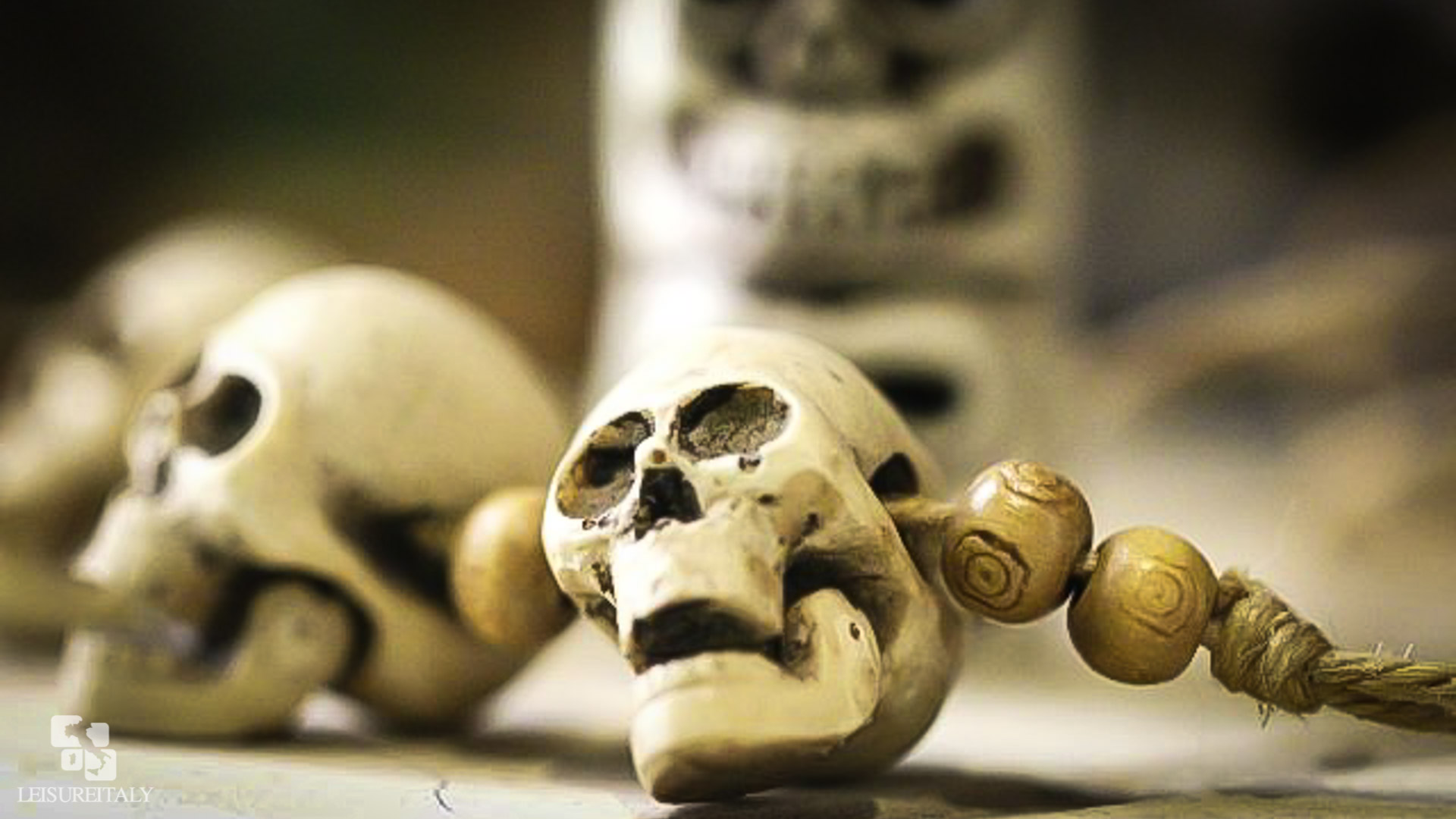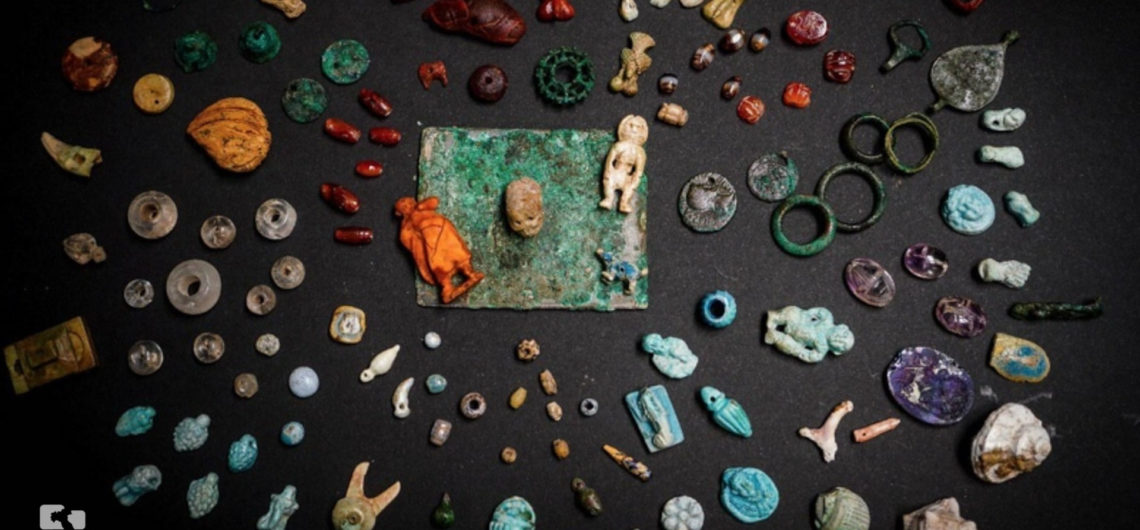Pompeii continues to unveil its secrets or, better to say this time, its treasures. In these days, the news of a mysterious new finding is going all around the world indeed, since it casts a light on how the inhabitants of Pompeii were dealing with magic, omens, and superstition.
The archaeologists who found this unique treasure named it the “Sorcerer’s treasure trove”: a trunk containing a stash of ancient amulets along with a vast variety of fascinating yet mysterious objects such as buttons made of bones, beetles from the Orient, dolls, miniature penis, and a tiny skull. The amulets, in particular, are tiny and richly detailed: one of them is a petite glass engraving of Dionysus, the Greek god of wine and religious ecstasy while another one represents Harpocrates, the Hellenistic deity of silence and secrets.

The Sorcerer’s treasure trunk was found at the House of the Garden, the same area where an inscription was recently uncovered that made historians change the date of the eruption of Vesuvius, shifting it from August 24th to October 24th 79 AD. It seems that the objects contained in the chest belonged to a woman who used them as a protection against evil and bad luck, as noted by Massimo Osanna, the general director of the Archaeological Park of Pompeii. It’s unclear whether the female owner of the amulets escaped the horrific eruption or if she did manage to flee to safety, however, she did not have time to grab her good-luck charms, Osanna remarks.
Although they are a fine example of beautiful craftsmanship, it seems that these objects belonged more to a servant or slave than to the owner of the house, since the chest did not include the gold that the wealthy people of Pompeii loved to wear. Nevertheless, their “magical power” remains unaltered: they could have been necklaces that were worn during the rituals for fertility, seduction or to seek good omens for birth or pregnancy as supposed by the archaeologists.
Who was this woman? Did she manage to save herself during the fatal eruption of the Vesuvius? These and other thousand questions will charm your mind once you will get the chance to admire such a beautiful yet mysterious finding. The amulets will soon go on display, along with other recent Pompeii finds, at the Palestra Grande, in an exhibition that will be a follow-up of “Vanity,” the former exhibition dedicated to jewels from the Cyclades, an island group in the Aegean Sea, Pompeii and other nearby sites.

Comments